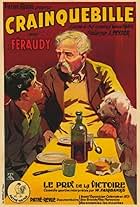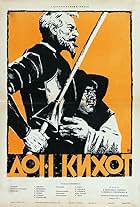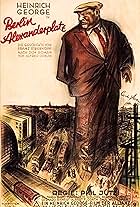brogmiller
Joined Oct 2019
Welcome to the new profile
We're still working on updating some profile features. To see the badges, ratings breakdowns, and polls for this profile, please go to the previous version.
Ratings1.1K
brogmiller's rating
Reviews1.1K
brogmiller's rating
Legal restraints having prevented him from filming the infamous Seznec Affair, André Cayatte has turned his attention to the institutionalised barbarity of death by guillotine in which he also points an accusatory finger at social inequality and collective responsibility.
The four murderers awaiting execution here are all based on characters who had crossed Cayatte's path whilst he was practising law and although for filmic purposes the fate of Le Guen is left in the balance, his character was in fact pardoned.
Cayatte and dialogue writer Charles Spaak have ensured a brutal and harrowing depiction with more than its fair share of sermonising to present a powerfully persuasive case for the abolition of the death penalty, aided immeasurably by committed performances from an excellent cast, especially the condemned who are presented as hapless victims of circumstance whose crimes would not have been prevented by the supposed 'deterrent' of capital punishment.
Although the film no doubt raised public awareness at the time, Madame la Guillotine was not to be banished for another thirty years.
Interestingly, the British release title turned Cayatte's statement into a question.
The four murderers awaiting execution here are all based on characters who had crossed Cayatte's path whilst he was practising law and although for filmic purposes the fate of Le Guen is left in the balance, his character was in fact pardoned.
Cayatte and dialogue writer Charles Spaak have ensured a brutal and harrowing depiction with more than its fair share of sermonising to present a powerfully persuasive case for the abolition of the death penalty, aided immeasurably by committed performances from an excellent cast, especially the condemned who are presented as hapless victims of circumstance whose crimes would not have been prevented by the supposed 'deterrent' of capital punishment.
Although the film no doubt raised public awareness at the time, Madame la Guillotine was not to be banished for another thirty years.
Interestingly, the British release title turned Cayatte's statement into a question.
It is perhaps pointless to remark on the difference in quality between the two well-mounted Sherlock Holmes adaptions from 20th Century Fox and the subsequent 'B' series from Universal once that studio had acquired the rights from the Conan Doyle Estate but as an avowed Holmesian purist I feel compelled to do so. It is also a source of amazement that Universal were permitted to drastically change the stories even to the point of having Holmes and Watson travel through time.
Having got that off my chest it must be said that 'The Woman in Green' is one of the best of the series, comparatively. It is the last of those penned by Bertram Millhauser with a distinct nod to Doyle's 'The Empty House' and like his previous screenplay 'The Pearl of Death', inspired by 'The Six Napoleons' has increased the horror element.
From the outset the film is darker in tone and indeed macabre, is stylishly shot by Virgil Miller with unusual camera angles and features the seductive femme fatale of Hillary Brooke and a chilling Henry Daniell as arch villain Moriarty.
The hypnosis scenes are by far the most effective but we are alas subjected to a 'comedy' one where the Dr. Watson of Nigel Bruce, now sadly reduced to the role of bumbling buffoon, ends up taking off a shoe and sock. The original screenplay apparently had him dropping his trousers but the censor soon put a stop to that. On a more serious note the murder victims were to be pre-pubescent girls but unsurprisingly were changed to adult women.
Rightfully considered the definitive Sherlock Holmes, the immaculate Basil Rathbone is utterly riveting but by his own admission began to find the whole enterprise rather tiresome. In his own words: "The first picture was a negative from which I merely continued to produce endless positives of the same photograph".
Having got that off my chest it must be said that 'The Woman in Green' is one of the best of the series, comparatively. It is the last of those penned by Bertram Millhauser with a distinct nod to Doyle's 'The Empty House' and like his previous screenplay 'The Pearl of Death', inspired by 'The Six Napoleons' has increased the horror element.
From the outset the film is darker in tone and indeed macabre, is stylishly shot by Virgil Miller with unusual camera angles and features the seductive femme fatale of Hillary Brooke and a chilling Henry Daniell as arch villain Moriarty.
The hypnosis scenes are by far the most effective but we are alas subjected to a 'comedy' one where the Dr. Watson of Nigel Bruce, now sadly reduced to the role of bumbling buffoon, ends up taking off a shoe and sock. The original screenplay apparently had him dropping his trousers but the censor soon put a stop to that. On a more serious note the murder victims were to be pre-pubescent girls but unsurprisingly were changed to adult women.
Rightfully considered the definitive Sherlock Holmes, the immaculate Basil Rathbone is utterly riveting but by his own admission began to find the whole enterprise rather tiresome. In his own words: "The first picture was a negative from which I merely continued to produce endless positives of the same photograph".
"The last stand of the silent pictures and the last hope for those who like 'em quiet, is Greta Garbo".
So wrote a reviewer in 'Motion Picture Magazine' and although Garbo held out for as long as she could she had no choice but to take the plunge. The accomplished Jacques Feyder not only had the distinction of directing her last film without dialogue but also of directing the German version of her first talkie 'Anna Christie'.
Despite its melodramatic plot Feyder has fashioned a polished piece of cinema and graced it with indefinable Gallic finesse whilst giving cinematographer William Daniels every opportunity to capture Garbo's beauty and her uncanny ability to register a variety of moods. She is furthermore costumed to perfection by Adrian and the whole enterprise is enhanced by Cedric Gibbons' stunning Art Deco interiors.
According to Lew Ayres, making his debut, the atmosphere on the set was wistful, not least among members of the 'mood' orchestra who would soon become redundant.
Contrary to expectations the film fared incredibly well at the box office. The fate of Garbo's next venture would of course depend entirely on how she sounded.........
So wrote a reviewer in 'Motion Picture Magazine' and although Garbo held out for as long as she could she had no choice but to take the plunge. The accomplished Jacques Feyder not only had the distinction of directing her last film without dialogue but also of directing the German version of her first talkie 'Anna Christie'.
Despite its melodramatic plot Feyder has fashioned a polished piece of cinema and graced it with indefinable Gallic finesse whilst giving cinematographer William Daniels every opportunity to capture Garbo's beauty and her uncanny ability to register a variety of moods. She is furthermore costumed to perfection by Adrian and the whole enterprise is enhanced by Cedric Gibbons' stunning Art Deco interiors.
According to Lew Ayres, making his debut, the atmosphere on the set was wistful, not least among members of the 'mood' orchestra who would soon become redundant.
Contrary to expectations the film fared incredibly well at the box office. The fate of Garbo's next venture would of course depend entirely on how she sounded.........
























